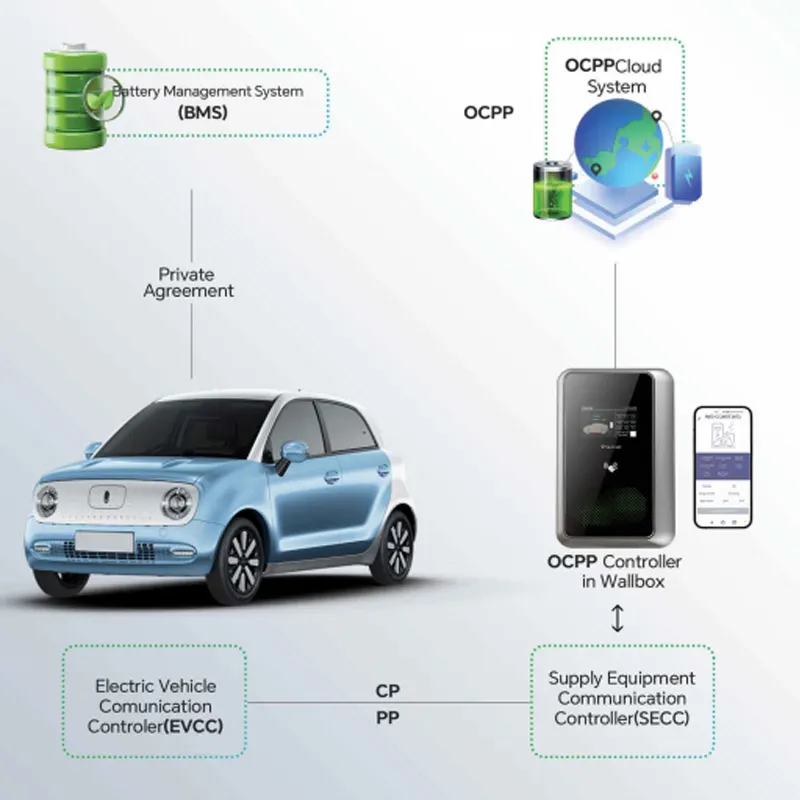The Importance of OCPP in Building a Scalable and Interoperable EV Charging Network

And when you think of cars, you may picture ones that run off of gasoline. The cars that are commonly found on the streets. But nowadays, a lot more vehicles are powered by electricity! Because they pose less of a threat to the environment, these electric cars are being used more frequently. Electric cars work like a gasoline car: you charge them up like you fill up the tank of gas. And this is where EV charging stations are entering the scene. These stations are called electrical short stops where electric cars have an opportunity to power their batteries in order for them to begin driving once more.
OCPP is something that allows those charging stations to really shine. This is an essential lesson that a lot people are beginning to embrace. Now, lets explore what OCPP is and the importance of OCPP in charging electric cars.
What is OCPP
OCPP Open Charge Point Protocol Now, that is a mouthful, but it really isn’t as complex as it sounds! This just means a way in which different charging stations can communicate with one another. In the same way that you need to share a common language to have a conversation with your friends, charging stations need to be communicating over the same protocol to collaborate together and provide EV charging. Open Charge Point Protocol OCPP is a protocol that allows charging stations from different sources to communicate with each other. When combined with the other communication protocols that tell EVs and chargers how to speak to one another, it helps ensure interoperability between all forms of charging stations.
The Role of OCPP in Making Charging Stations Work Together
We started with understanding what OCPP is, now let us understand the working of it. Let us say two charging stations, one from Company A and the other from Company B, cannot talk to each other, because they are using different ways to talk to their own, let’s say the systems of Company A and Company B. This might create issues for those driving electric vehicles in need of a charge. However with OCPP they can communicate with each other seamlessly.
Open Charge Point Protocol is a translator for the charging stations. It enables them to comprehend what the other is saying even if expressed via a different channel. In other words, let's say an electric car goes to a charging station operated by Company A and finds it busy, the car could go instead to a Company B station. If both charging stations are using OCPP, they should be able to work together without a hitch.
Advantages of OCPP for EV Charging Station
There are several advantages of using OCPP for charging station and electric car drivers as well. First, it allows for seamless interoperability between charging stations. This is important because it allows to build a huge network of charging stations more easily. More stations means more electric car drivers can use them without compatibility concerns.
But OCPP comes with one more great advantage: it simaltaneously improves management and maintenance of the stations. The stations are all connected and can communicate with one another making it easier to monitor usage and diagnose any issues as they present themselves. This means that, if a charging station is malfunctioning, it is immediately repaired so that electric vehicle drivers do not get stranded without a place to recharge.
Why OCPP is So Important
There are several reasons OCPP or 4G Modle is a crucial component for building a good EV charging network. This is beneficial for standardizing how various charging stations and management systems communicate with one another. That means any charging station from any manufacturer can talk to each other just fine. This is particularly useful for drivers that are unsure of which manufacturer made the station they are using.
Second, OCPP enables seamless communication between the chargers. This means that if a station is busy or malfunctioning, an EV driver can find another station and not have to worry about whether it will be functional. This makes it much easier for a wider audience to charge their devices.
Focus: On OCPP to make the charging stations improved
Another benefit of OCPP is that it can make charging stations more efficient and reduce their downtime. If charging stations can communicate to one another, then maintaining them becomes a breeze. For example, when a charging station malfunctions, OCPP enables immediate communication to detect and repair the issue.
OCPP also allows for the collection of valuable data such as charge frequency and charging time. This data may also be useful for determining where new charging stations should be placed. As a case in point, if the data indicates that a large number of drivers consistently plug in their vehicle at a particular site during a specific time of the day, more chargers can then be introduced in that region to accommodate the drivers.
To sum up, OCPP and DLB is a key element stumbling block for the building of practical EV charging infrastructure. This allows charging stations provided by different companies to talk to each other, and simplifies maintenance and management of the whole network. OCPP enables more charging networks to operate efficiently, reliably, and for the use of a larger number of electric car drivers. The more we learn about OCPP the more we realize how crucial it is in steering us towards a better future and cleaner future with EVs.
Comments
Post a Comment